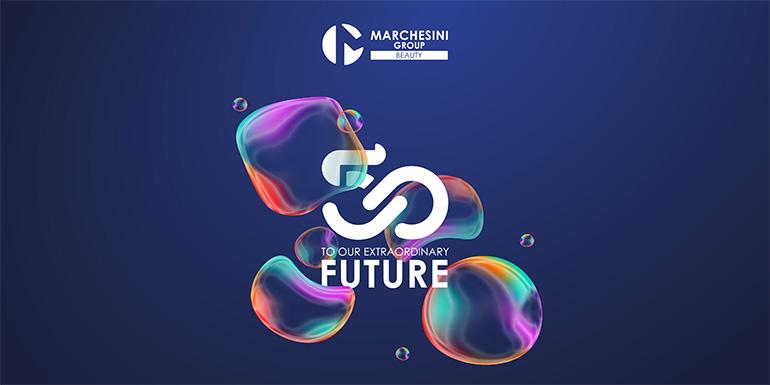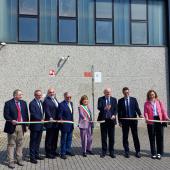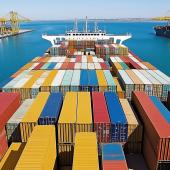The future is a shared project
2024 is an important year for Marchesini Group, which is celebrating its first 50 years thinking of the future, the professional community it has built up worldwide and the packaging valley it has always played an important role in.
Maria Costanza Candi
Let’s hear from... Valentina Marchesini

A year marked by the campaign “Our Extraordinary Future” and with a celebration open to the city and involving all the company’s employees across the globe. Let’s hear about this special year from HR Manager Valentina Marchesini, who will be talking about artificial intelligence, the central role of people and social innovation.
“There is no reason to fear AI,” Marchesini begins, “because it’s an innovation that’s here, and must be used as effectively as possible. As is always the case with innovation in Marchesini Group, we have implemented AI from the perspective of our world, i.e. automatic machines. This is a technology that regards a shared set of knowledge to be exploited, in particular for machine learning functions. One example is its application in pharmaceutical technology, where changes to formats, prescriptions and formulas often make machinery manufacturers’ lives difficult. Think, for example, of a change to the format of a blister packaging machine, where a new pack requires a project and a software developer to adapt the machine, which makes time to market longer and the process more complex.”
Machines teaching machines
Each change to the production line is a complex operation. However, thanks to machine learning and AI, the question takes on a whole different form in terms of efficiency and optimisation.
“AI changes everything,” explains Valentina Marchesini, “because the machine itself is taught to recognise the different formats. Here at Marchesini Group we have a robot designed to teach our robots, so that their functioning can be adapted to the new requirements of the machine, which is no longer reprogrammed, but is able to learn from a pool of shared knowledge. For months, the robot has been instructed on how to manage all types and formats of pharmaceutical and non-pharmaceutical packaging, so in the event of a variation, it is able to use the data base to adapt its action accordingly, without intermediate steps, and with significantly faster execution times. The objective is therefore to construct an extensive body of knowledge on which AI is able to make associations based on the instructions provided by the human operator.”
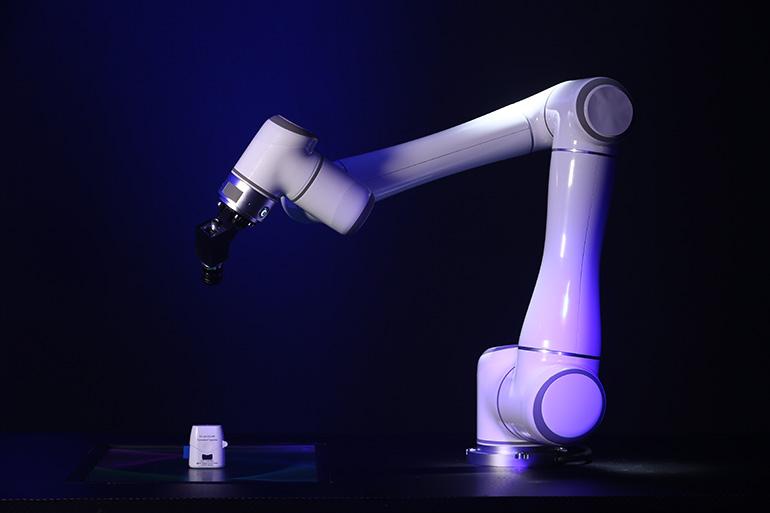
The key role of the human factor
What role do human beings have to play in all this? According to Valentina Marchesini, they have a key role, which requires an attentive reflection on the question of gender, something we don’t often hear about in highly technical environments.
“The role of the human operator must include both male and female skills, because it impacts the teaching provided to the machine, where the female element is also important: we are educating complex systems that have to respond to both male and female reasoning and approaches, and this is also key to establishing and consolidating shared principles of equity and ethics. The human factor plays a decisive role in the way we choose to educate AI: leaving it all in the hands of men or giving the education of the model a male-female balance.
This concept conditions the way in which AI plans our travels, suggests where to position a product on the supermarket shelves, or how to solve a technical problem. The way in which AI can be used is in our hands, so potential risks are connected to a malicious use of these extraordinary inventions. Consider one of the areas we operate in, the pharmaceutical industry: this is a sector that can cure people, but it can also kill them, if used incorrectly. What makes the difference between one and the other? Correct prescription, management and control, i.e. the human factor and the ethical choices made.”
The key role of education and training
Responsible choices in this area derive from an in-depth knowledge of the tools available. This is why Marchesini Group believes that training plays a key role in the educating operators and citizens to maintain the reins of the technological revolution ushered in by AI.
“I’m an optimist by definition, so when I think of AI, I see the advantages brought by collective intelligence that it is able to make the most of. Consider the pharmaceutical and medical sector, where the power of analysis and connection of knowledge offered by AI will lead to a drastic reduction in trial times, without compromising on safety, as well as allowing us to identify clinical solutions to complex medical issues and optimise treatment programs. There are ethical issues involved, for sure, but the priorities are set by humans, whose task it is to teach the machines what is morally right or wrong. The human dimension remains central, whether we’re talking about cybersecurity, where errors and vulnerabilities are always of human origin, or ethical questions such as those mentioned in the medical or pharmaceutical sphere, or in the transport sector. It’s always competences and training that make the difference: human beings with the proper training are able to understand the qualities and the limits of technology, and are able to control it, grasping the risks and opportunities it offers.”
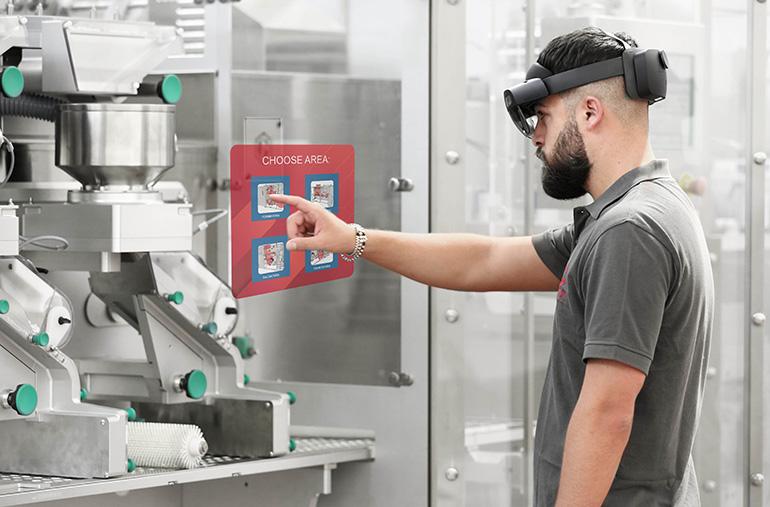
Companies where people are key
The humanistic vision applies not only to the world of machines, but also to business management, regarding which Valentina Marchesini’s ethical vision is consistent with her reflections on AI, in a context of social innovation where the relationship between enterprise and the public good strikes a balance functional to the growth of the social systems they are part of.
"I feel it is important to point out Olivetti was not the only entrepreneur to go down this road. If we look at the most important families in Italian industry, the first name that comes to mind is Michele Ferrero, a beacon of the concept of humanism in the industrial sphere, and an interesting figure who never lost sight of the importance of taking care of people’s wellbeing, a central feature in the development of his companies. Also worth mentioning is Crespi d’Adda, another example of how an ethical approach to business is possible by taking up a position midway between the State and the individual. The current trend is concerning, because the shrinking of welfare contrasts with the increasingly central role of businesses in maintaining people’s standards of living. This enormous power in the hands of companies is not fully understood by the institutions and by society. Today, businesses are being asked to step in and help the institutions to reduce costs, but without a strategy to optimise those savings. This means there is a lack of acknowledgement of the role of companies in the welfare system and in supporting income, the real drop in the services provided and the lack of an effort for the coordination of the actions taken. Our view is that companies should support the extras, not replace the State, which thus abdicates from its role of responsibility towards its citizens, effectively widening the inequality gap between those with a company at their back and those without.”
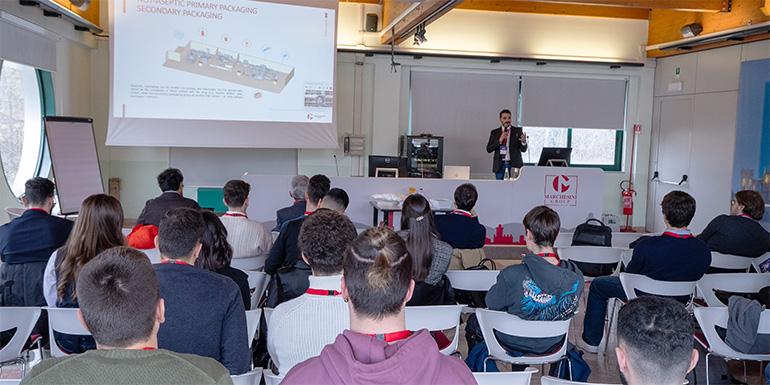
Celebrations in Piazza Maggiore
With a view to maintaining the relationship between the company and the society it operates in, in September, Bologna will be hosting a major event designed as a celebration of Marchesini Group’s first 50 years in business, in the city and with the city.
“We see this 50th anniversary as a new beginning, focused on the future and on what we intend to achieve,” concludes Valentina Marchesini. “We’ll be opening up to the city we are part of, which plays a leading role in the packaging valley, without forgetting all the other places in the world we are present in. This is not so much a celebration of our past as a reflection on our idea of the future, which here and elsewhere is founded on the value of a community spread all over the world and which will be coming to Bologna to celebrate with us. The reflection we’re guided by is a consideration of the future we would like to see, how we can shape that future and continue to be a part of it. We will be engaging everyone in a reflection on our idea of the future, to boost the awareness that each one of us is part of a future we will be building together.”
The corporate campaign provides a clear explanation of this concept of community and mutual enrichment. The unevenly shaped bubbles and the campaign mascot “Futura” represent this idea of building the future together, as Valentina Marchesini explains:
“The idea of the communication bubble is based on the idea that beautiful as a bubble is, it can only grow bigger and more beautiful by joining up with others. The blobs contain the reflections collected during the celebrations, coming together to become increasingly solid and effective and arriving in Piazza Maggiore as a gift to the city. This is an attractive spectacle to witness and take part in, but it’s also a little social experiment that will provide us with information on the future, on how people see, experience and conceive the future. So after the event, with the aid of futurologists, we expect to be able to develop a reflection able to interpret our data in combination with a humanistic and scientific reflection on the results generated by collaboration between individuals.”
